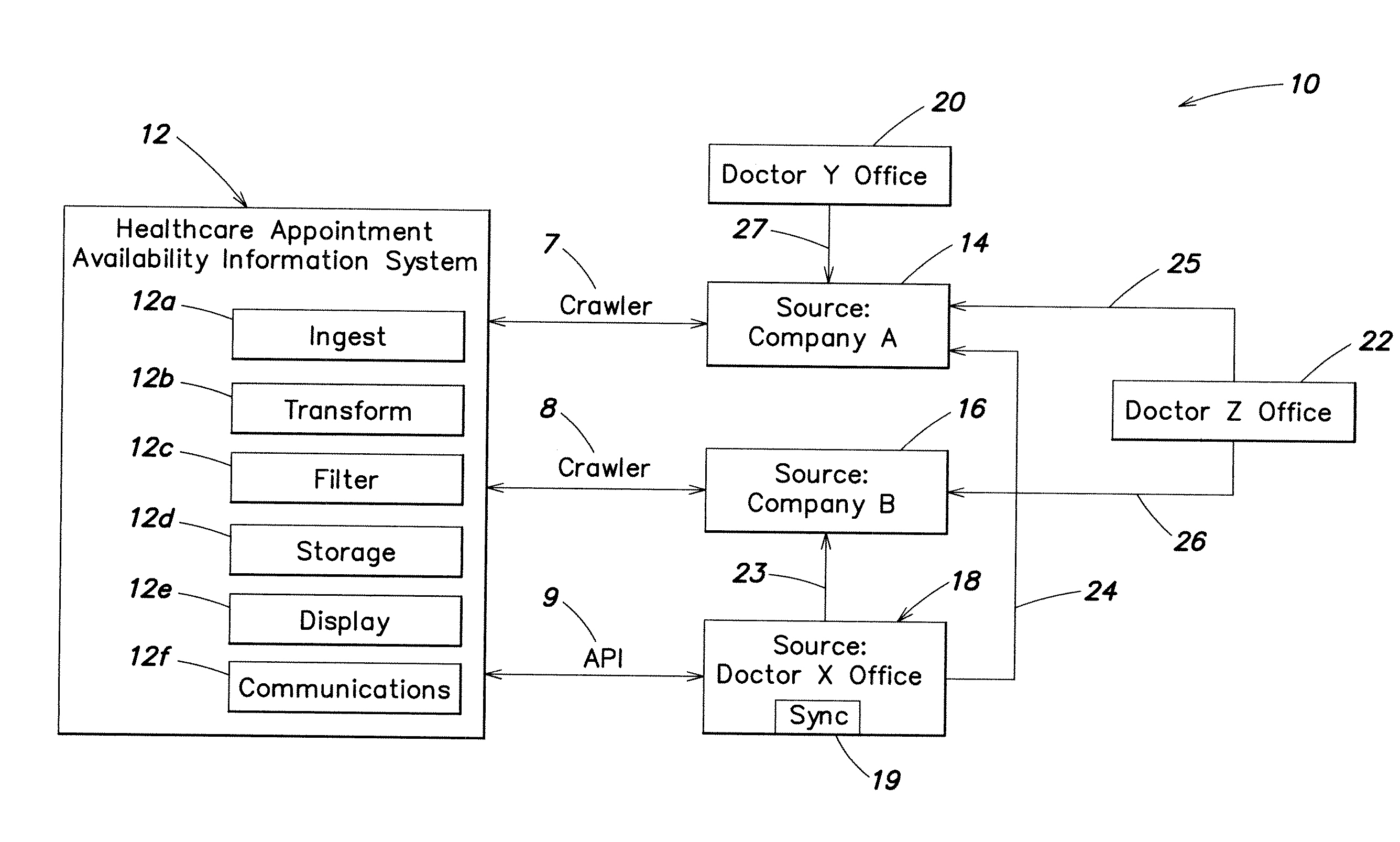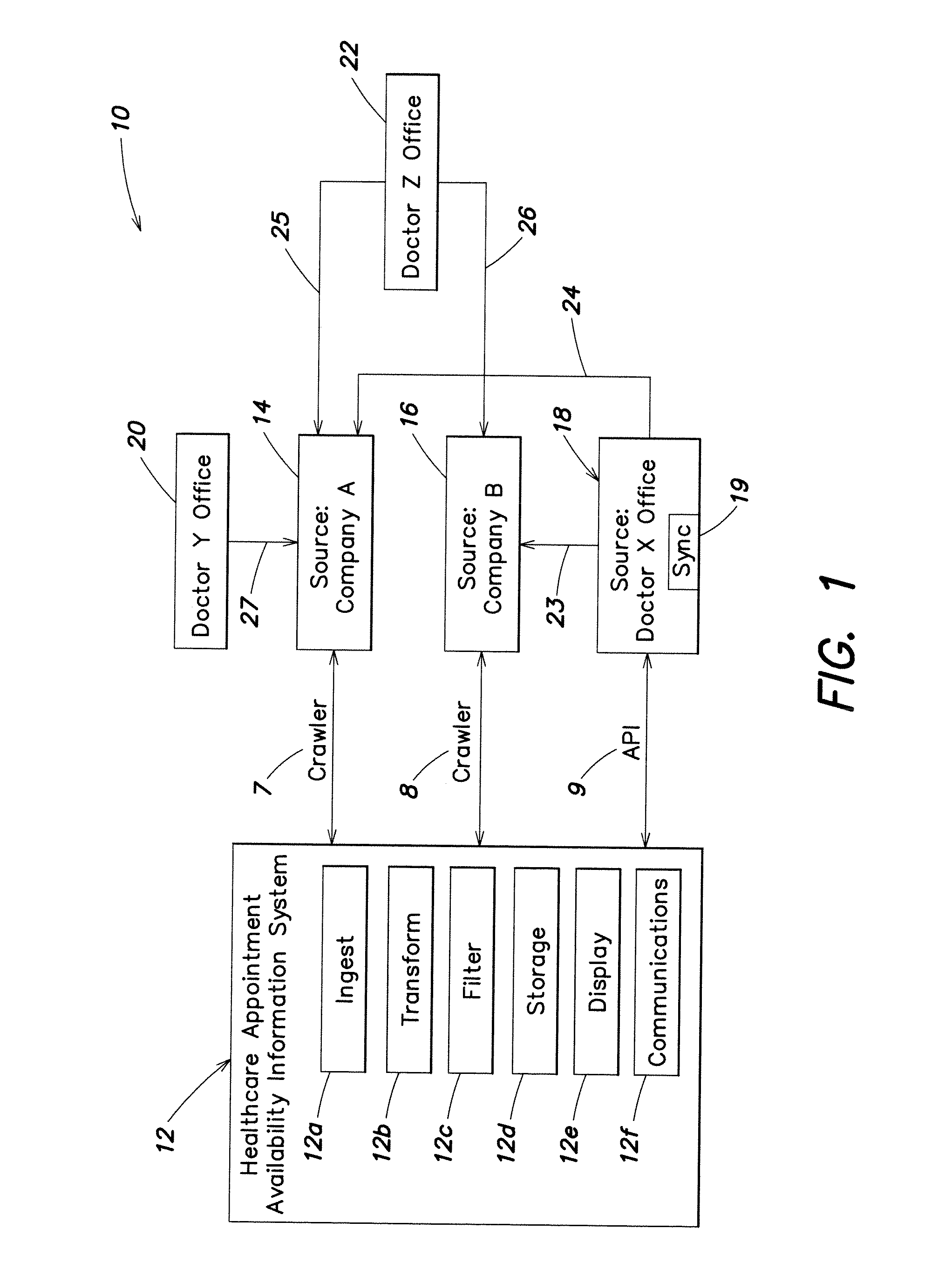System and method for accessing healthcare appointments from multiple disparate sources
a healthcare appointment and disparate platform technology, applied in the field of system and method for improving access to and booking healthcare appointments from multiple disparate platforms, can solve the problems of increasing the complexity and burden of maintaining up-to-date appointment records and patient information, limited options for patients, and inability to always improve patient experience, so as to facilitate patient booking and management of healthcare appointments, facilitate booking, and facilitate the effect of booking
- Summary
- Abstract
- Description
- Claims
- Application Information
AI Technical Summary
Benefits of technology
Problems solved by technology
Method used
Image
Examples
embodiment 250
[0124]FIG. 10 is a flow chart illustrating a first method embodiment 250 of the invention, which may be implemented as previously described (FIGS. 1-2). In a first step 251, healthcare provider availability data is ingested from multiple aggregated or non-aggregated sources (e.g., via web crawlers and APIs). In a next step 252, the ingested data from the multiple sources is mapped (transformed) to common formatted parameters and the mapped data is stored on the storage system. The mapping step may include generating a single unique data record based on, for example, a priority score of the respective source.
embodiment 260
[0125]FIG. 11 illustrates another method embodiment 260 which includes steps of publishing the stored availability data for searching by the user and booking of an appointment on behalf of a user (patient). In a first step 261, the availability data is published on a user interface and a user enters a search request correlating to one or more of the common formatted data parameters. In next step 262, the user search request for an available appointment is received. In next step 263, based on the user request, the stored (mapped) data is filtered to determine a set of available appointment times that best satisfy the search criteria. The next step 264, the set of available appointment times is published to the user display for entry by the user of a booking request at a selected available appointment time. In next step 265, the user booking request is received and in next step 266 an appointment is booked by the system on behalf of the user (patient) at the selected time with the res...
embodiment 270
[0127]FIG. 12 illustrates one method embodiment 270 for establishing a user account that enables the system to book appointments on behalf of the user (patient). In first step 271, the system collects and stores user healthcare data for an associated user account. Typically this is done via an interface (website or mobile application) wherein patient specific information is requested from the user to enable the system to access (on behalf of the patient) other sources (e.g., websites) of doctor availability via user access information (e.g., security information such as a user name and password), as well as other patient contact and healthcare data to facilitate both the booking and subsequent record keeping of booked appointments. In next step 272, the system books a healthcare appointment on behalf of the user and the booked appointment is stored as user healthcare data. In next step 273, the system publishes (e.g., via the user interface) a calendar of the user's booked appointme...
PUM
 Login to View More
Login to View More Abstract
Description
Claims
Application Information
 Login to View More
Login to View More - R&D
- Intellectual Property
- Life Sciences
- Materials
- Tech Scout
- Unparalleled Data Quality
- Higher Quality Content
- 60% Fewer Hallucinations
Browse by: Latest US Patents, China's latest patents, Technical Efficacy Thesaurus, Application Domain, Technology Topic, Popular Technical Reports.
© 2025 PatSnap. All rights reserved.Legal|Privacy policy|Modern Slavery Act Transparency Statement|Sitemap|About US| Contact US: help@patsnap.com



